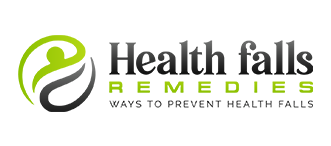
Do you know true fitness isn’t built in the gym but in the kitchen? Fitness and nutrition go hand in hand, with many sports nutritionists estimating that reaching fitness goals requires 80 percent diet and 20 percent exercise. Without the proper nutrition to support your active lifestyle, all those hours spent on the treadmill or lifting weights could be largely wasted! Here’s why: Even if you hit the gym every single day, even if you hire a trainer, you can’t out-exercise a bad diet. But by adopting a diet centered on nutrient-dense food and targeted meal timing, you can fuel your workouts and lose body fat while also building muscle. Check out our step-by-step fitness nutrition guide below for easy nutrition and exercise strategies to help you reach your goals.
Simple steps to follow for better fitness results
Step 1: dump the junk
Whether you’re just starting your fitness journey or are a bona fide gym rat, getting in shape starts with the food you eat. Ultra-processed foods filled with refined grains, sugar, and unhealthy fats make up nearly 34 percent of calories in the average American diet. Not only do these foods contribute to weight gain, but they also foster systemic low-level inflammation and, according to new research, increase the risk of chronic illness and early death.
What’s the difference between processed and ultra-processed foods? Processed foods are real foods that have been altered during the manufacturing process to increase the nutrient profile or extend the food’s shelf life. Good examples of this are sweetened fruit juice or frozen potatoes. Ultra-processed foods, however, are foods that contain artificial colors and flavors, added sugars, hydrogenated fats, and chemical preservatives designed to light up the reward centers in our brains. Examples of these faux foods include soft drinks, energy drinks, artificially flavored chips or crackers, and sugary breakfast cereal. Because these foods are nutritionally bankrupt, they won’t do a thing to boost your fitness levels.
Eating healthy is essential when it comes to optimizing your fitness routine and efforts.
Step 2: Mind your macros
Paying attention to your macros and timing your nutrition to support your workouts are two of the best ways to move closer to where you want to be. While protein gets a lot of press among athletes and weight loss gurus, it’s not the only macronutrient you need! The three primary nutrients your body needs to function are protein, carbohydrates, and fat. Each plays a different role in overall health and in helping you achieve your fitness goals. While both protein and carbohydrates provide 4 calories per gram, fat provides 9 calories per gram. To meet your daily nutritional needs and to support your workouts, the Food and Nutrition Board of the Institutes of Medicine recommends distributing your macros as follows :
- Protein – 10%-35%
- Carbohydrates – 45%-65%
- Fats – 20% -35%
When you eat enough protein you provide your body with the building blocks (amino acids) needed to repair, maintain, and build your muscles. Including protein in every meal also boosts your leptin levels—a hormone that suppresses your appetite. Pairing protein with a good quality carbohydrate can help you feel full longer. But because the body can’t store protein for later use, it’s important to include some protein at every meal and snack time. It’s also smart to space your protein intake evenly throughout the day—about every three to four hours. Eggs, grass-fed beef, chicken, turkey, and omega-3 rich fish like salmon are good sources of protein.
Carbohydrates have gotten a bad name lately, but they are essential for energy and exercise performance. Healthy complex carbohydrates are an efficient source of energy that fuel muscle contractions. Carbs are broken down into smaller sugars (glucose, fructose, and galactose) in the body to be used as quick energy for immediate tasks. Any unused glucose will be converted into glycogen and stored in the muscles and liver for future use. Glycogen is the energy source most often used for short, intense bouts of exercise, such as sprinting or weightlifting. If your fitness routine falls into the low to moderate exercise category, the carbs you eat during your regular meals are probably sufficient. However, if you participate in high-intensity exercise or endurance activities that last for more than an hour, it’s smart to replenish your carbohydrate stores during your workout. Look for healthy complex carbs in whole grains like oatmeal, farro, and quinoa, and starchy vegetables like sweet potatoes and parsnips.
Fat is another macronutrient that has suffered from a bad reputation in the fitness and weight loss world. But research shows that eating fat doesn’t make you fat. Instead, healthy fats provide critical fuel for lower intensity activities like walking or biking, as well as endurance exercise. Essential fatty acids are also critical for overall health. Not only do these fats ensure healthy cell structure, protect your internal organs, and help to keep you warm, they are also necessary for the absorption of some nutrients and the production of hormones. Healthy fats include avocados, coconut oil, extra virgin olive oil, and nuts.
A post-workout meal packed with protein and healthy carbs can help build muscle.
Step 3: Pre and post-workout nutrition
If hitting the gym is part of your fitness routine, you’ve likely seen those bodybuilders with their gallon jugs filled with pre-workout branched chain amino acids (BCAAs) or caffeinated blends of sports nutrients like nitric oxide and creatine. But unless you train hard or workout for more than an hour at a time, you likely don’t need these specialty nutrients. That said, fueling your body with the right nutrients before a workout will ensure you have the strength and energy for optimal performance, no matter how intense your exercise.
What you eat and when you eat it matters for optimizing your metabolism, especially if you are training for or participating in an endurance activity like a half-marathon or an obstacle course races. Eating carbohydrates within 60 minutes of an endurance activity will boost your insulin and blood glucose levels just before you exercise. This can improve your performance.
But if you’re just aiming to hit a Zumba class or do some moderate weight lifting, opt for a balanced pre-workout snack containing both carbohydrates and protein 45 minutes before you train. Here are some healthy, whole foods options:
- Almond butter on whole grain bread
- A cup of oatmeal and one scrambled egg
- Greek yogurt and fruit
- Dried fruit and a handful of nuts
- Half a turkey sandwich
What you eat after a workout is as important—if not more important—than what you eat before. A post-workout meal or snack will help with muscle recovery and glycogen replacement. It also helps build muscle mass and strength after a resistance-based workout like weight lifting. While the pre-exercise focus is primarily on carbs, the spotlight after your workout should be on protein. And timing is critical. Try to eat your post-workout meal or snack within 45 minutes of your workout. Studies show that waiting for as little as two hours after you’ve racked that last weight can cut the rate of glycogen synthesis by as much as 50%.
When you choose foods that are easily digested, you promote faster absorption to speed nutrients to your depleted muscles. Here are some ideas for effective post-workout meals:
- Grilled chicken with roasted veggies
- Salmon with roasted sweet potatoes
- Tuna and crackers
- Scrambled eggs and avocado toast
- A protein shake and a banana
5 ways to rock your fitness nutrition
- Don’t skip meals. Eating three balanced meals a day and one or two healthy snacks can keep you energized and prevent blood sugar spikes and crashes.
- Focus on whole foods. While protein drinks and bars are convenient, they are often high in sugar and additives. Fuel your workouts with real food instead.
- Maintain your electrolytes. High-intensity workouts like aerobics or a HIIT routine that last for an hour or more can deplete your electrolytes. While coconut water is a good option, you can also replenish your electrolytes with foods like bananas, avocados, and watermelon.
- Don’t cut too many calories. If you’re looking to lose weight, make sure you’re eating enough calories to fuel your workouts and daily activities while still creating a deficit. Cutting too many calories can put the body into “starvation mode” and may slow your metabolism. This could cause your weight loss to plateau.
- Stay hydrated. Drink plenty of fluids throughout the day to prevent dehydration and make sure to have your water bottle handy during your workout. While there is no evidence-based “right” answer, current wisdom holds that you should drink half your body weight in fluid ounces of water daily. For example, a woman weighing 150 pounds should drink 75 fluid ounces of H20 every day.
Now that you know the importance of nutrition & exercise, and how fitness nutrition is the prelude to an active lifestyle, you can talk to your practitioner about a fitness nutrition plan that works for you — both in the kitchen and beyond!






